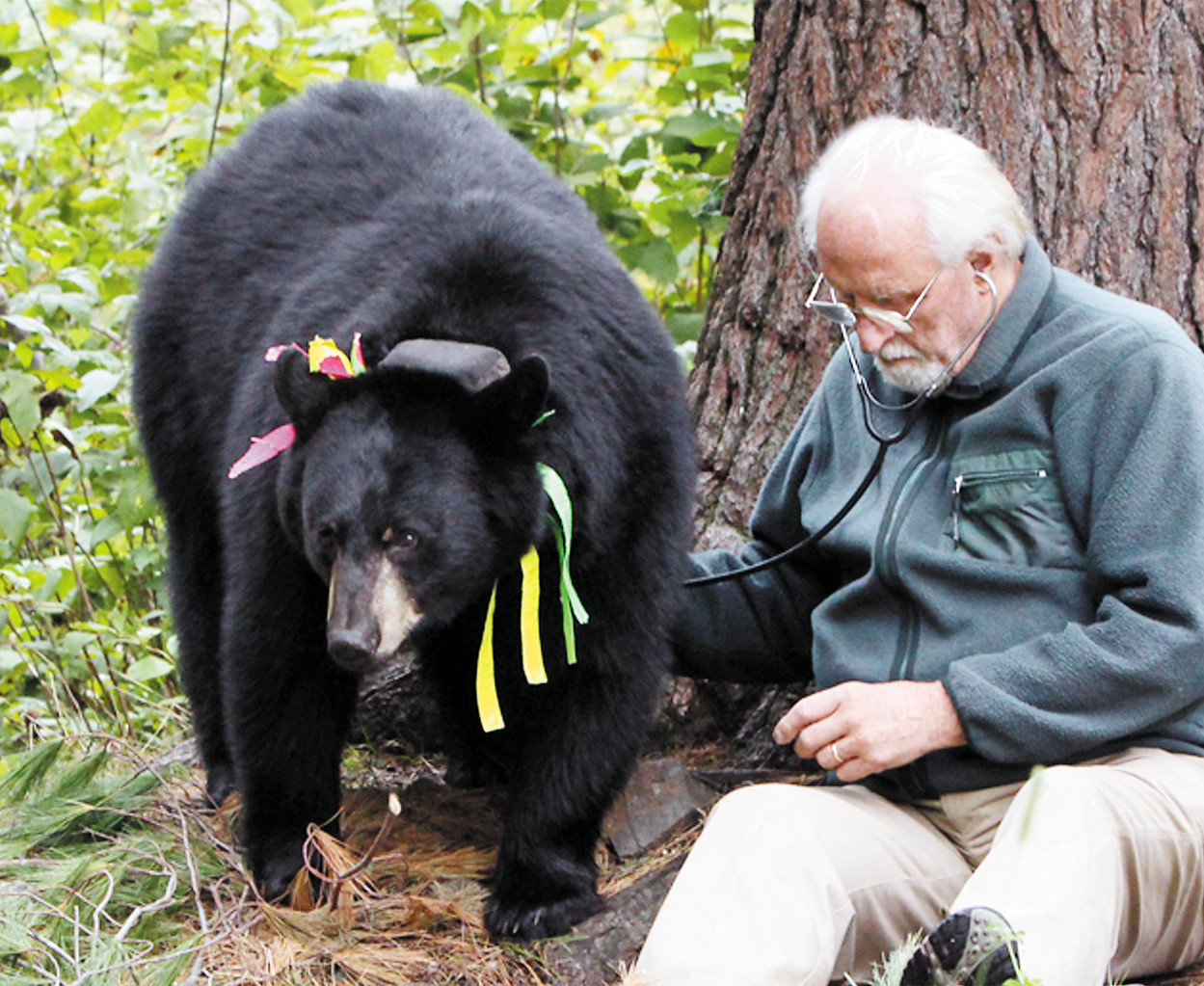Support the Timberjay by making a donation.
The battle over bears
Ely researcher taps public sentiment in push to protect radio-collared bears
Lynn Rogers and the many followers of his bear research aren’t content to take no for an answer.
The Ely-based researcher has organized a letter and email blitz to Minnesota legislators and Gov. …
This item is available in full to subscribers.
Attention subscribers
To continue reading, you will need to either log in to your subscriber account, or purchase a new subscription.
If you are a current print subscriber, you can set up a free website account and connect your subscription to it by clicking here.
If you are a digital subscriber with an active, online-only subscription then you already have an account here. Just reset your password if you've not yet logged in to your account on this new site.
Otherwise, click here to view your options for subscribing.
Please log in to continue |
The battle over bears
Ely researcher taps public sentiment in push to protect radio-collared bears
Lynn Rogers and the many followers of his bear research aren’t content to take no for an answer.
The Ely-based researcher has organized a letter and email blitz to Minnesota legislators and Gov. Mark Dayton, urging them to reconsider the recent decision by Department of Natural Resources Commissioner Tom Landwehrs not to extend legal protection to radio-collared black bears.
Rogers and his now famous bears Lily and Hope have attracted an enormous worldwide following and Rogers has been appealing to that base of support to advance his request.
Legislators and the governor, as well as the DNR and the media, have been inundated in recent days with letters in support of protection for research bears. Rogers has also posted an online petition, which had received more than 15,000 signatures as of this week.
Rogers is also making his case in newspaper reports and editorials, including an editorial in the Timberjay.
Rogers says he’s working so hard for the protection of his research bears because his unique approach to research makes his bears harder to replace.
While Rogers currently has nine radio-collared bears, he says only about four or five will actually allow researchers to walk with them, an approach to bear research that Rogers developed. According to Rogers, that small handful of bears provides the vast majority of the detailed data that he has been able to gather on bear behavior over the years.
“If one of those bears gets shot, we lose so much,” said Rogers. “A bear like June, who just turned 10, is irreplaceable in our lifetime. That’s why we’re trying so hard to protect them.”
The bear known as Lily is a daughter of June’s and shares her mother’s acceptance of human observers, according to Rogers. Lily is mother to Hope, the young bear cub that attracted worldwide attention last year when her birth and early days of life were recorded by Rogers through use of a den cam. Rogers’ research has also attracted the attention of wildlife videographers, who have filmed several wildlife documentaries, including those produced by the BBC.
While the DNR regularly asks hunters to avoid shooting radio-collared bears, Commissioner Landwehrs rejected full protection, citing possible inconvenience to hunters, difficulty of enforcement, and the possibility that radio-collared bears could be shot by mistake. Landwehrs also suggested that Rogers’ research is not essential to the management of bear populations in Minnesota.
Landwehrs also cited the state’s ongoing efforts to obtain voluntary compliance from hunters, which has generated mixed results. The DNR lost nine radio-collared study bears statewide last fall, while hunters shot two of Rogers’ collared bears.
Legislation appears unlikely, for now
Despite Rogers’ efforts, the prospect for legislation to overrule Landwehrs’ decision is uncertain. Rep. David Dill, DFL-Crane Lake, said he’s open to taking action, but wants Rogers and bear hunting groups to reach consensus on how radio-collared bears should be marked. The Minnesota Bear Guides Association favors ear tags, but Rogers opposes that approach, saying it requires tranquilization of bears, something he believes would undermine the trust he’s developed with his subjects.
“At this point,” said Dill, “I’m not offering any legislation.”
But Dill said he’s well aware of the economic impact that Rogers’ research has had in the Ely area. “Still, I think we need to develop a consensus.”
Senate Minority Leader Tom Bakk, DFL-Cook, is even less enthusiastic about legislation at this point. “The truth is, the DNR has said they don’t support a prohibition. They certainly will tell the governor to veto any such bill.”
Bakk also has doubts about the wisdom of bear protection in general.
“I think too big a deal has been made out of them as game animals,” he said. “When I was a kid, we shot them for tipping over garbage cans. We don’t protect coyotes. I don’t think bears should be protected, either. They’re scavengers.”
While large numbers of emails and letters typically have a great deal of influence with legislators, both Bakk and Dill noted that the vast majority of the letters and emails they have received on this issue have come from outside their district, many from outside the U.S., which they acknowledge carry little weight politically. “I’m not interested in emails from England,” said Bakk.
Still, not all of the support is from outside the area. In December, the Ely City Council unanimously approved a letter of support for Rogers’ position, in large part due to the economic impact his research has had on the area.
Rogers points to the attention his research has attracted worldwide and notes that it is attracting an increasing number of foreign visitors to the area for events, such as the Lilypad Picnic, sponsored by supporters of Rogers’ research.
The recent BBC documentary was viewed by more than 100 million people around the world,” said Rogers. “That’s the kind of publicity the chamber could never buy.”






